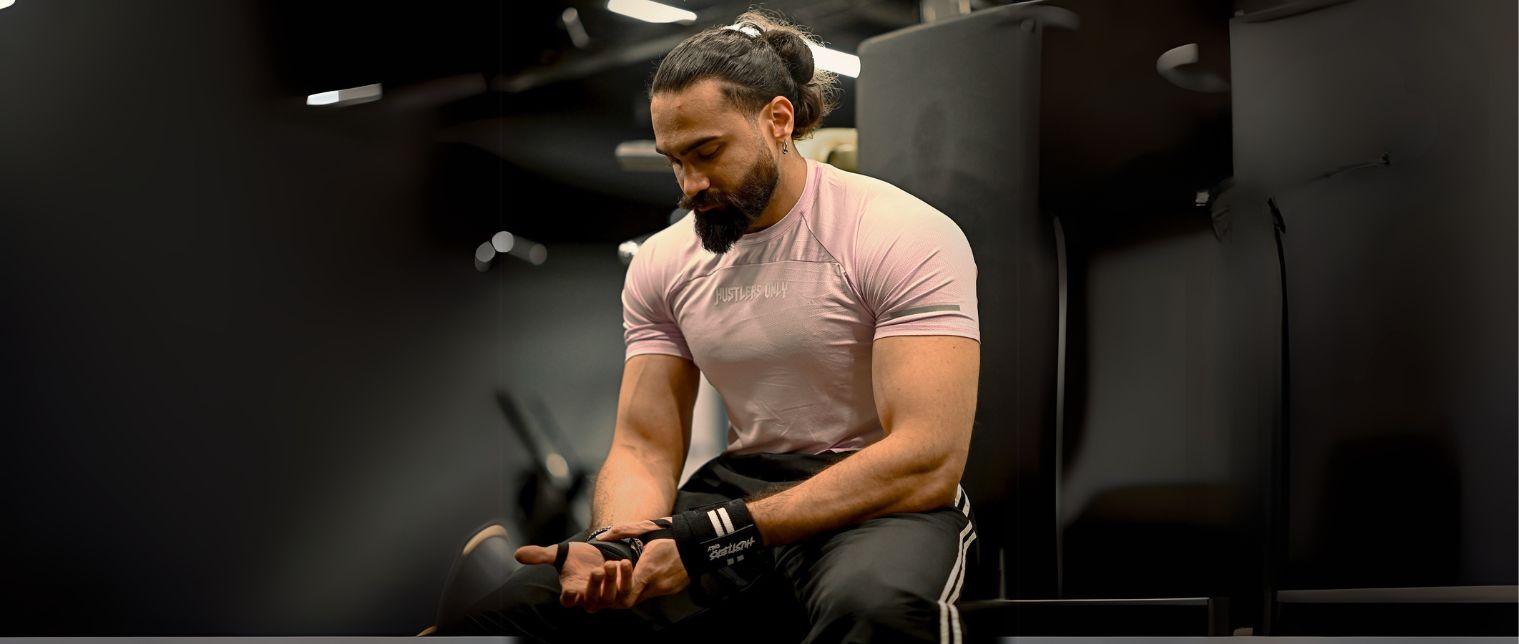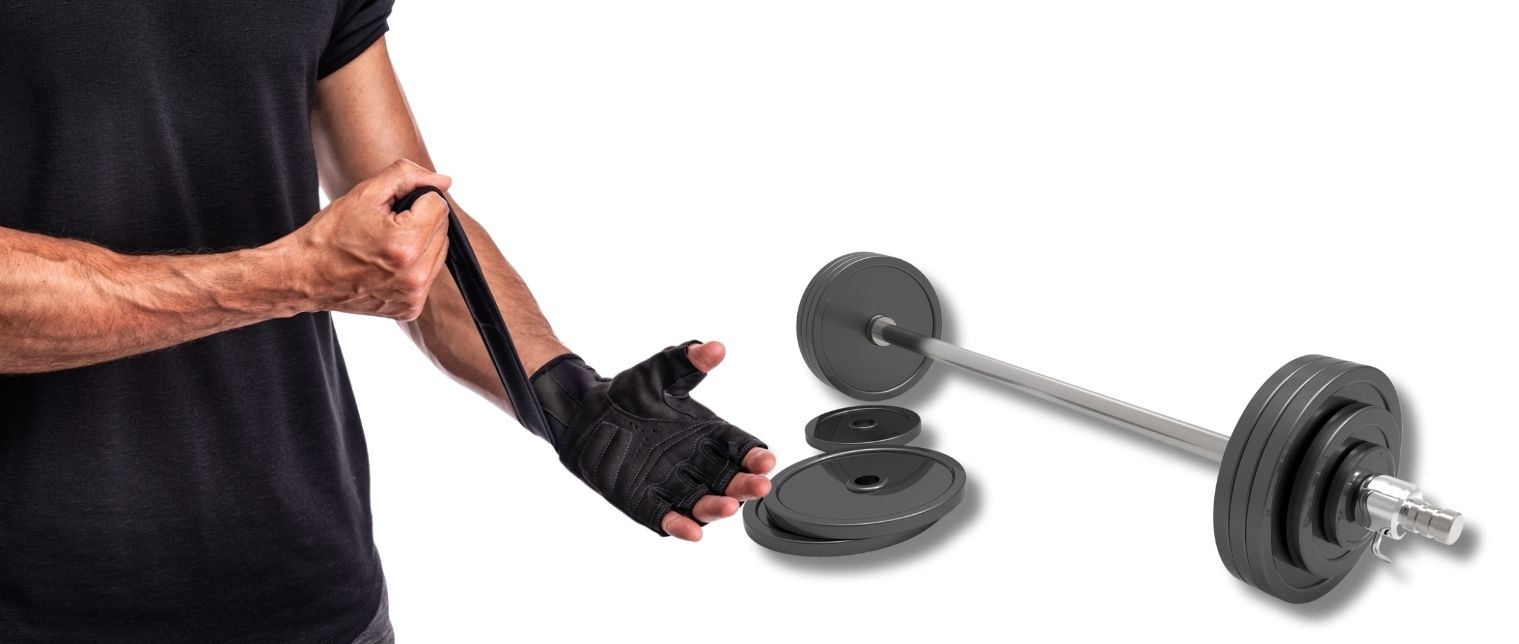Introduction
Weightlifting accessories play a crucial role in improving your performance and safety in the gym. Among the most commonly used accessories are lifting straps and weight-lifting gloves. Both serve distinct purposes and offer unique benefits. This guide will help you understand when to use lifting straps instead of weight-lifting gloves, ensuring you get the most out of your workouts.
Introduction to Lifting Straps and Gloves
Both lifting straps and weight-lifting gloves are essential tools for weightlifters aiming to enhance their performance and safety. While they might seem interchangeable, they serve different purposes and are suited for various types of exercises and lifting goals.
Benefits of Lifting Straps
Enhanced Grip
Lifting straps are designed to wrap around your wrists and the barbell, providing a secure grip that reduces the reliance on your hand strength. This allows you to lift heavier weights without worrying about your grip slipping.
Reduced Hand Fatigue
By transferring the load from your hands to your wrists and forearms, lifting straps help reduce hand fatigue. This is especially beneficial during high-rep sets or heavy lifts.
Improved Lift Performance
With a secure grip, you can focus more on your lifting technique and less on holding onto the bar. This can lead to improved performance and the ability to lift heavier weights.
Benefits of Weight-Lifting Gloves
Hand Protection
Weight-lifting gloves protect your hands from calluses, blisters, and abrasions. They provide a barrier between your skin and the rough surfaces of barbells and dumbbells.
Enhanced Grip
Gloves often feature padding or textured palms, which can enhance your grip on the equipment. This is particularly useful for exercises that require a firm hold.
Comfort
Gloves offer additional comfort by cushioning your hands and providing a more secure and stable grip. This can make your workouts more enjoyable and less painful.
When to Use Lifting Straps
Heavy Lifting
When lifting extremely heavy weights, such as during deadlifts or rows, lifting straps can help you maintain a secure grip, allowing you to focus on the lift rather than your grip strength.
Deadlifts
Deadlifts are one of the primary exercises where lifting straps are highly beneficial. They enable you to lift heavier weights by reducing grip fatigue and ensuring a firm hold on the bar.
Pull Exercises
For exercises like pull-ups, lat pulldowns, and bent-over rows, lifting straps can provide extra support and stability, helping you to perform more reps and sets effectively.
When to Use Weight-Lifting Gloves
High-Volume Training
During high-volume training sessions that involve numerous sets and repetitions, weight-lifting gloves can help prevent blisters and calluses, ensuring your hands remain protected and comfortable.
Comfort
If you find that lifting barehanded causes discomfort or pain, gloves can provide a cushioned layer that makes your workouts more enjoyable.
Callus Prevention
Regular weightlifting can lead to the development of calluses. Gloves help prevent these by providing a protective barrier between your hands and the weights.
Comparing Lifting Straps and Gloves
Grip Strength
Lifting straps provide superior grip strength compared to gloves, especially for heavy lifts. They reduce the reliance on hand strength and transfer the load to your wrists and forearms.
Versatility
Weight-lifting gloves are more versatile for different types of workouts and exercises. They can be used for various lifting styles and also provide protection and comfort.
Protection
While both provide protection, gloves are specifically designed to prevent calluses and blisters, whereas straps are focused on enhancing grip strength and reducing hand fatigue.
Types of Lifting Straps
Loop Straps
Loop straps are the most common type, featuring a simple loop design that wraps around your wrist and the bar. They are easy to use and provide excellent support.
Figure 8 Straps
Figure 8 straps are designed to wrap around your wrists and the bar in a figure-8 pattern, providing a very secure grip for heavy lifts, particularly deadlifts.
Hook Straps
Hook straps feature a hook that attaches to the bar, reducing the need for grip strength. They are beneficial for those with grip issues or injuries.
Types of Weight-Lifting Gloves
Full-Finger Gloves
Full-finger gloves provide complete hand protection, covering all fingers and the palm. They are ideal for outdoor or cold-weather workouts.
Half-Finger Gloves
Half-finger gloves are the most popular type, offering protection for the palms while allowing for better dexterity and grip with the fingers.
Padded Gloves
Padded gloves feature extra padding in the palm area, providing additional cushioning and protection. They are suitable for heavy lifting and high-volume training.
How to Properly Use Lifting Straps
Wrapping Technique
- Place your hand through the loop of the strap.
- Tighten the strap around your wrist.
- Wrap the loose end of the strap around the barbell.
- Secure the strap by wrapping it tightly and gripping the bar.
Safety Tips
- Ensure the strap is tight enough to provide support but not too tight to cut off circulation.
- Practice proper wrapping techniques to avoid accidents.
- Check the condition of your straps regularly and replace them if they show signs of wear.
Best Practices
Use lifting straps primarily for heavy lifts and pulling exercises. Avoid relying on them for every workout to ensure you still develop grip strength.
How to Properly Use Weight-Lifting Gloves
Fitting Tips
- Choose gloves that fit snugly but not too tight.
- Ensure the gloves cover the areas of your hands that are prone to blisters and calluses.
- Test the grip of the gloves with various weights to ensure they provide adequate support.
Maintenance
- Regularly clean your gloves according to the manufacturer's instructions to prevent odor and bacteria buildup.
- Inspect for any signs of wear and tear and replace them if necessary.
Common Mistakes
Avoid using gloves that are too loose, as they can reduce your grip strength. Make sure to choose gloves with adequate padding and grip features.
Combining Straps and Gloves
When and How
You can use both straps and gloves together during heavy lifting sessions where maximum grip and hand protection are needed. This combination can be particularly beneficial for deadlifts and rows.
Benefits
Combining straps and gloves provides both enhanced grip strength and hand protection. It allows you to lift heavier weights while keeping your hands safe from blisters and calluses.
Situational Use
Use the combination during your most challenging lifts or when you're aiming for new personal bests. This approach maximizes both performance and safety.
FAQs
Can lifting straps help with grip strength?
Lifting straps help with grip during heavy lifts, allowing you to focus on building muscle without being limited by grip strength. However, they should be used in conjunction with exercises that build grip strength to avoid dependence.
Are lifting straps better than gloves for deadlifts?
Yes, lifting straps are generally better for deadlifts because they provide a more secure grip, allowing you to lift heavier weights without worrying about grip fatigue.
Do weight-lifting gloves prevent calluses?
Weight-lifting gloves help prevent calluses by providing a protective barrier between your hands and the weights, reducing friction and pressure on the skin.
Can I use both lifting straps and gloves together?
Yes, you can use both lifting straps and gloves together for exercises that require maximum grip and hand protection, such as heavy deadlifts and rows.
How do I choose the right lifting straps?
Choose lifting straps based on your lifting goals and preferences. Loop straps are versatile and easy to use, figure 8 straps offer maximum security, and hook straps are helpful for those with grip issues.
What are the main benefits of using lifting straps?
The main benefits of using lifting straps include enhanced grip strength, reduced hand fatigue, and improved performance during heavy lifts.
Conclusion
Choosing between lifting straps and weight-lifting gloves depends on your specific lifting needs and goals. Lifting straps are ideal for heavy lifts and exercises that require maximum grip strength, while weight-lifting gloves offer protection and comfort during




Share:
Exploring the Purpose and Benefits of Gym Towels
Can You Use Resistance Bands for Abs?